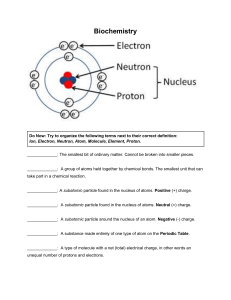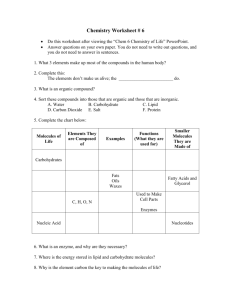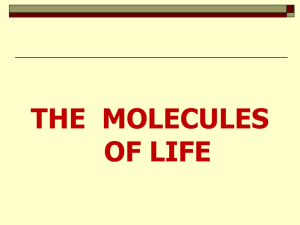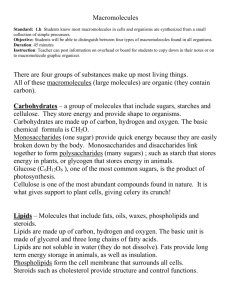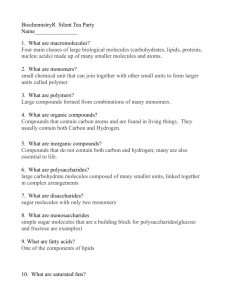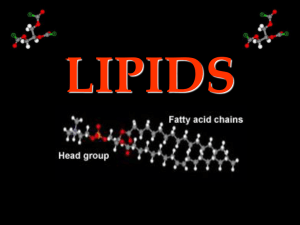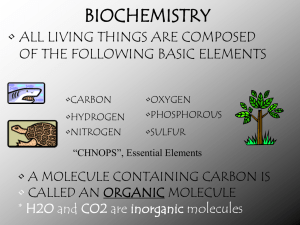Chemistry & Biomolecules Worksheet: High School Review
advertisement
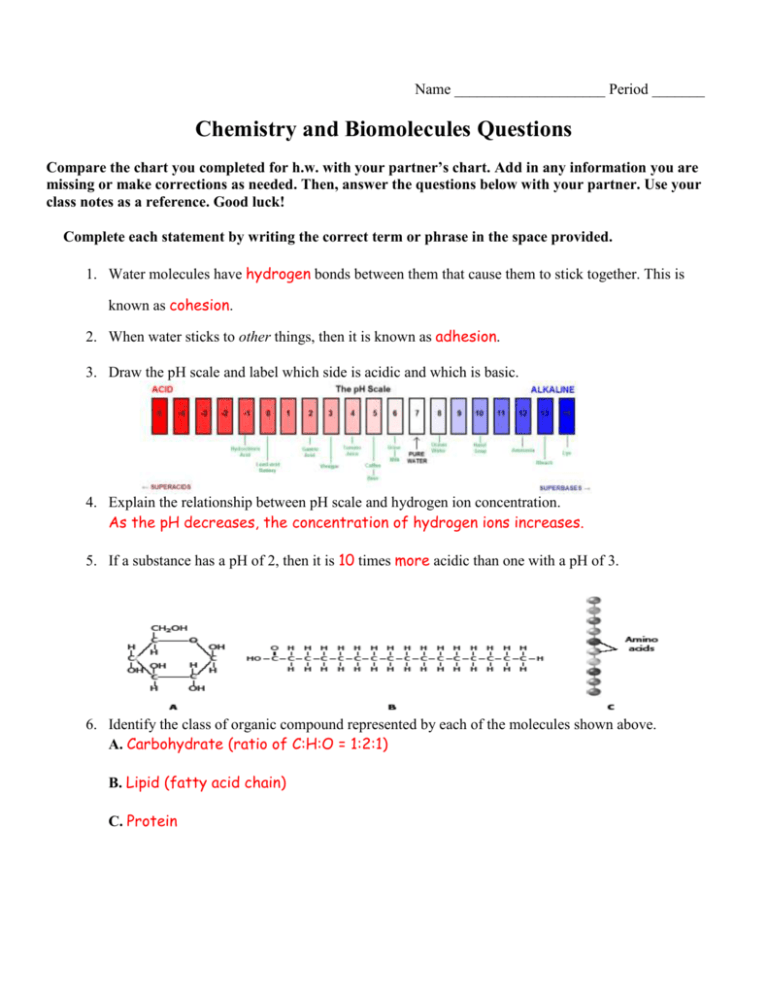
Name ____________________ Period _______ Chemistry and Biomolecules Questions Compare the chart you completed for h.w. with your partner’s chart. Add in any information you are missing or make corrections as needed. Then, answer the questions below with your partner. Use your class notes as a reference. Good luck! Complete each statement by writing the correct term or phrase in the space provided. 1. Water molecules have hydrogen bonds between them that cause them to stick together. This is known as cohesion. 2. When water sticks to other things, then it is known as adhesion. 3. Draw the pH scale and label which side is acidic and which is basic. 4. Explain the relationship between pH scale and hydrogen ion concentration. As the pH decreases, the concentration of hydrogen ions increases. 5. If a substance has a pH of 2, then it is 10 times more acidic than one with a pH of 3. 6. Identify the class of organic compound represented by each of the molecules shown above. A. Carbohydrate (ratio of C:H:O = 1:2:1) B. Lipid (fatty acid chain) C. Protein 7. For each type of compound shown above, explain the role it plays in your body. A. Short–term energy, structural in plants (cellulose) B. High concentrated source of energy, makes up cell membranes C. Structural, speeds up chemical reactions (enzymes) 8. How can you tell whether a compound is organic or not? ALL living things contain the elements carbon. 9. Explain why living things need energy and where they get it. Energy is needed to drive all live processes (growth, repair, maintenance) Plants convert light energy chemical energy in the form of glucose Other organisms must consume the plants or animals in order to obtain energy. In the space provided, write the letter of the description that best matches the term or phrase. 10. ___d__ nucleic acid a. Molecule that temporarily stores energy from food 11. ___g__ nucleotide b. involved in the production of proteins 12. ___e__ DNA c. 13. ___b__ RNA d. one of the major classes of organic compounds 14. ___a__ ATP e. stores hereditary information 15. ___f__ Amino acid f. Building block of proteins 16. ___c__ Monosaccharide g. Building block of DNA or RNA 17. ___h__ fatty acids h. part of the building block of lipids Building block of carbohydrate 18. The carbon atoms in organic molecules are bonded to other atoms by covalent bonds. 19. The four major classes of biomolecules are carbohydrates, lipids, proteins, and nucleic acids. 20. The building blocks (monomers) of carbohydrates are monosaccharides. 21. If a carbohydrate molecule contained six carbon atoms, it would also contain 12 hydrogen atoms. 22. Humans cannot digest the carbohydrate cellulose. 23. Fats are lipids that store energy. 24. Two polysaccharides that store energy are starch, which is produced by plants, and glycogen, which is produced by animals. 25. DNA and RNA, which are two kinds of nucleic acids, are made of long chains of nucleotides. 26. Fats are composed of three fatty acid molecules joined to a molecule of glycerol. 27. At room temperature, unsaturated fats are usually liquids. 28. A protein is a chain of linked smaller molecules called amino acids.


